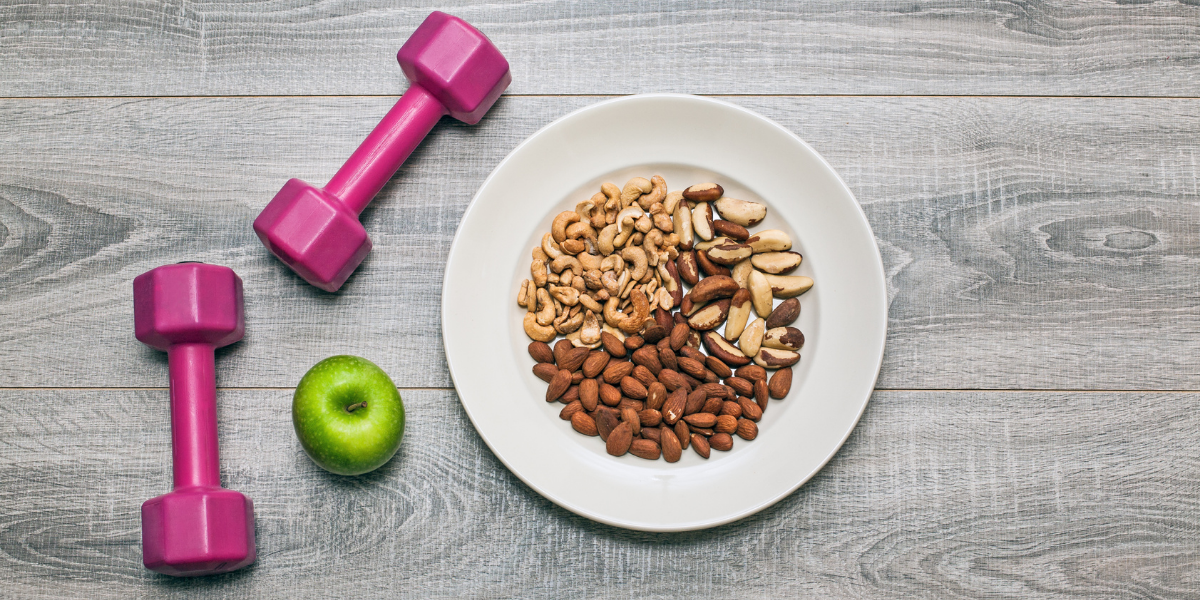Having a healthy, happy relationship with both exercise and food is the ideal. Unfortunately, diet culture teaches us to put them both in the same basket and ‘diet and exercise’ plans are everywhere. We may cut calories and up our exercise to force weight loss, but this can be counterproductive if we don’t understand what our fuel needs are for exercise and what our body needs to function well.
Sometimes we may feel we have to earn our food or burn it off afterwards. The calorie balance equation of calories in, calories out is frequently rammed down our throats, but in reality, there is so much nuance to this, it’s complex, we’re complex.
If we can uncouple diet and exercise, we stand to benefit hugely.
Have a think, what part do you want exercise to play in your life?
You get to choose how you want to move your body. You get choose what activities, exercises or sports make you feel good and give you the return on investment you are looking for.
For some, exercise is a huge part of their lives. They train many hours a day and are quick to share its benefits, whether that be from a body composition, fitness or mood perspective. But that’s them, and you can do you.
It’s always good to revisit your main purpose for exercise – why you’re doing it and what you’re looking to get out of it. Do you want to get fitter, stronger, more flexible? Are you doing it for the social or mood enhancing aspects? Everyone is different.
If you choose to exercise solely for the purpose of weight or fat loss, then you may find yourself becoming stuck. Unhealthy relationships between food and exercise can develop quickly, especially when the scales aren’t consistently giving you the results you’re seeking, despite the perceived effort staying the same.
Often the scale becomes the measure of your progress and subsequent success or failure. Research tells us that those that are using exercise for weight loss purposes, tend to stop these exercise habits if the food side of things starts to go off kilter too. If you tie eating and exercise behaviour together it can get messy.
How do you want exercise to look and feel in your life, for life?
Next, let’s consider how you fuel your body for exercise.
To do this, we’ve got to tackle a few myths…
Understanding fat burn vs fat loss
The intensity of exercise you’re doing will determine what sort of fuel you are ‘burning’ or using as energy throughout. A lot of exercise will use a mixture of fat and carbohydrate. Low intensity exercise is able to use oxygen to oxidise fat and use it for fuel. As intensity of exercise rises, and it’s harder to get enough oxygen into working muscles, we switch to using anaerobic methods – namely glycolysis – the process by which we break down carbohydrate and use this for fuel. At high intensities we can only use carbohydrate. The by-product of this is lactic acid, which will limit performance, which is one of the ways training can help, by raising our lactic acid threshold.
If you’re burning fat as a fuel, this is not the same as fat loss. Fat loss from your stores won’t occur unless you are in an energy deficit but again it’s a bit more subtle than this and creating big energy deficits is counter productive and more stressful for the body.
Should you exercise in a fed or fasted state?
This depends on what you’re aiming for.
If you’re exercising fasted, then you will probably burn more fat than carb as your carbohydrate stores in the liver and muscles will be being used up to maintain blood glucose levels.
Some people prefer to exercise fasted because they find it more digestively comfortable, others feel fatigue and can sense a drop in their blood glucose levels, so it’s personal preference. Meta-analysis studying the differences shows there’s no difference for weight loss.
If you’re exercising for less than an hour, you’ll get away with doing it fasted. However, if you’re exercising for over an hour, then you will need carbohydrates. The body has enough carb stores to last approx. 1.5 hours so longer exercise durations benefit from carbohydrates taken on during exercise, for performance.
How do carbs fit in?
Often you hear of athletes deliberately training ‘low’ so they force metabolic adaptations and get more efficient at using fat as a fuel. They can afford not to perform optimally in training, to allow these adaptations to take place but for optimal performance, there is absolutely no doubt that carb will increase time to exhaustion. Being in a calorie deficit, or deliberating avoiding carbs, is likely to affect your training performance and make exercise feel more effortful, which may hinder your motivation to keep doing it, or to get the most out of the session, thus impacting on your ability to get stronger and fitter.

The key with carb is to be curious about the amount that makes your body run well and be comfortable with titrating it up and down depending on how active you are – and don’t forget your brain requires carb too.
If you think you’d benefit from some tailored advice drop me a line. And for more clarity on carbs grab your free ebook which will tell you everything you need to know to navigate this complex food group and get it right for your body.


Leave A Comment